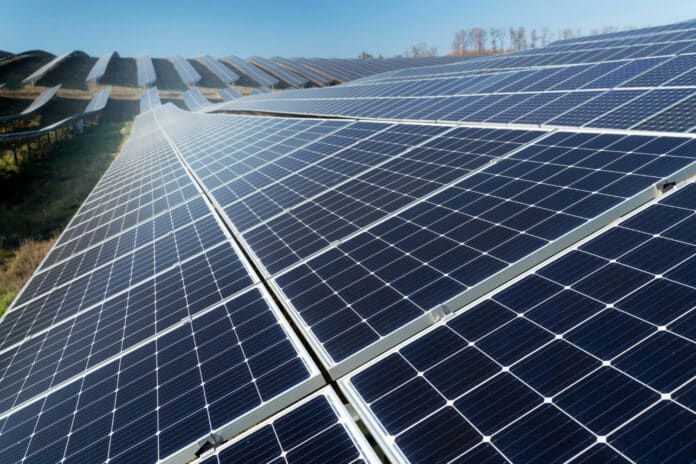Conventional silicon-based solar cells have undoubtedly played a significant role in advancing renewable energy. However, achieving further performance improvements has become increasingly challenging with the devices reaching their practical efficiency limits. As a result, scientists have been exploring new technologies to combine with silicon cells to unlock higher efficiencies.
Crystalline silicon solar cells called perovskites have rapidly emerged as an appealing technology thanks to their impressive power conversion efficiencies (PCEs) and low-temperature and low-cost assembly prospects. However, these cells are susceptible to voltage-induced changes, making them vulnerable to external factors such as the shade cast by nearby structures, trees, leaves, sand, snow, and even cleaning procedures. This can cause an entire module to fail within minutes.
Now, researchers from Princeton University and the King Abdullah University of Science and Technology (KAUST) in Saudi Arabia have successfully combined silicon solar cells and perovskite sub-cells in a tandem solar cell to boost overall efficiency and strengthen stability. Combining both cells offers greater efficiency than either cell can achieve individually and protects the vulnerable perovskite solar cell from voltage-induced breakdown.
“Tandem solar cells have already demonstrated power conversion efficiencies that are greater than either silicon or perovskite solar cells alone,” said research leader Barry Rand. While silicon and perovskite solar cells have demonstrated efficiencies of around 27% and 26%, respectively, tandem devices have already reached efficiencies of over 33% within the span of just a decade of research.
“We thought that in addition to their higher efficiencies, tandem solar cells could also solve some of the stability challenges facing perovskites by linking them with silicon cells, which are much more stable,” Rand said.
To test their hypothesis, researchers built three strings of solar cells. One string consisted of only silicon cells, another consisted of only perovskite cells, and the third was composed of tandem solar cells, with both technologies connected in a series. The team then shaded one of the cells in each string to simulate partial shading conditions, which panels are likely to face during their long lifespans.
Partial shading typically leads to failure for perovskite solar cells as the shaded cells force charge to flow through the inactive cell, causing degradation of both the cell and the entire module. On the other hand, silicon solar cells are more robust to voltage fluctuations and can withstand partial shading with fewer problems.
As expected, the perovskite-only module deteriorated quickly after partial shading, while the silicon module was minimally impacted. However, the tandem module was as durable as the silicon-only module, indicating that connecting the two technologies allowed the silicon cells to mask the frailty of the perovskite.
“When you combine two different materials to form a final product, usually it’s the weakest link that ends up determining the overall strength of the chain,” said co-author Stefaan De Wolf, professor of material science and engineering at KAUST, in the press release. “But in this case, it’s actually the stronger component that protected the weaker one.”
The researchers said their findings demonstrate that partial shading may be a negligible concern for series-connected tandem solar devices.
The team pointed out the existence of several challenges that need to be addressed before tandem solar cells can achieve the expected lifespan of commercial solar technologies, including their poor resilience to heat. Despite these challenges, they believe that tandem devices have the potential to drive further evolution in solar research once silicon solar cells reach their upper power conversion efficiency limits.
